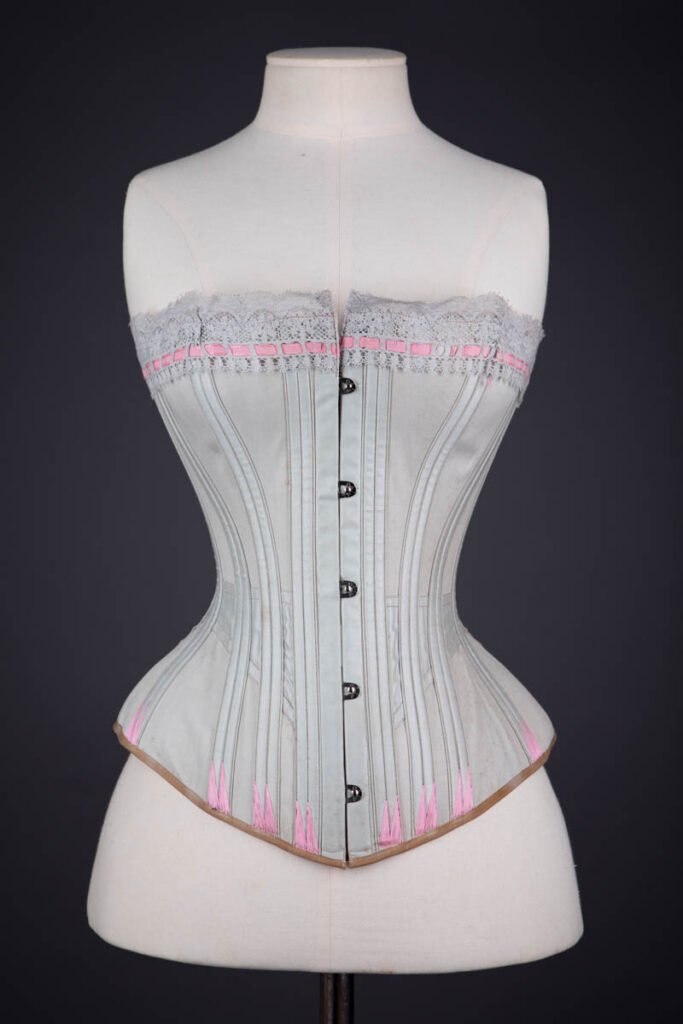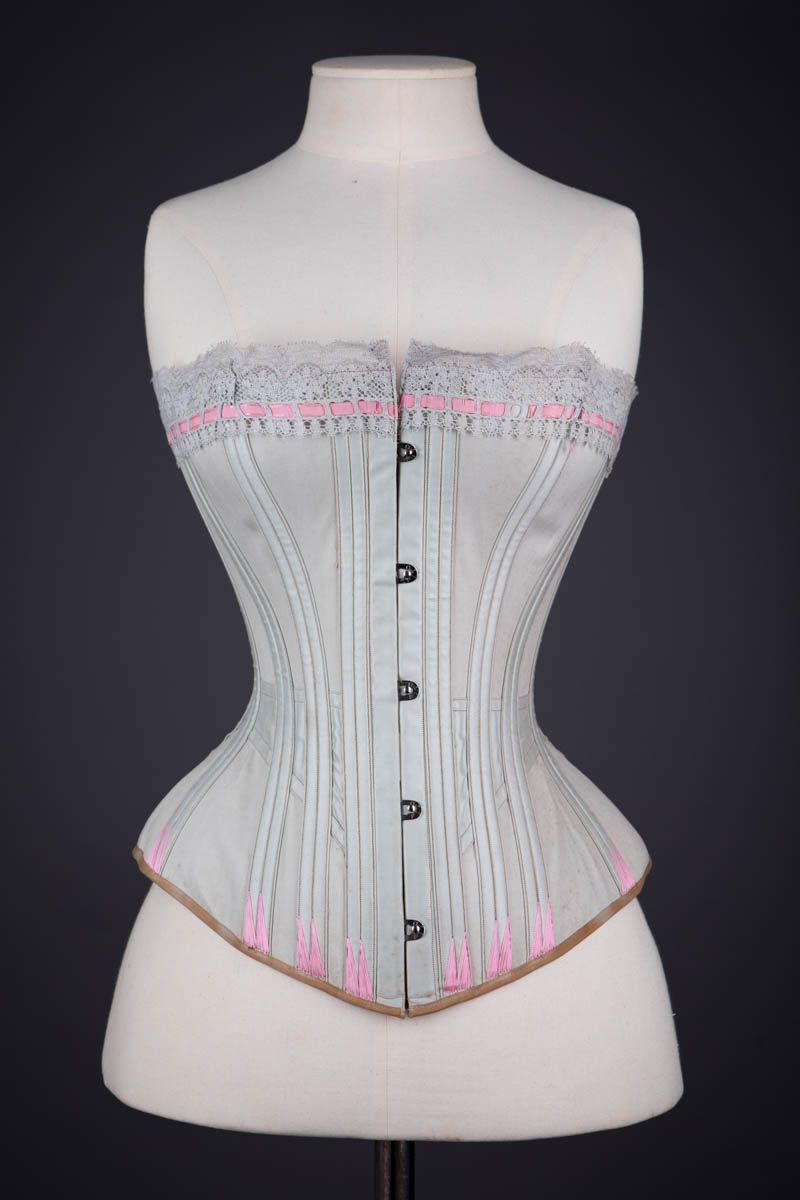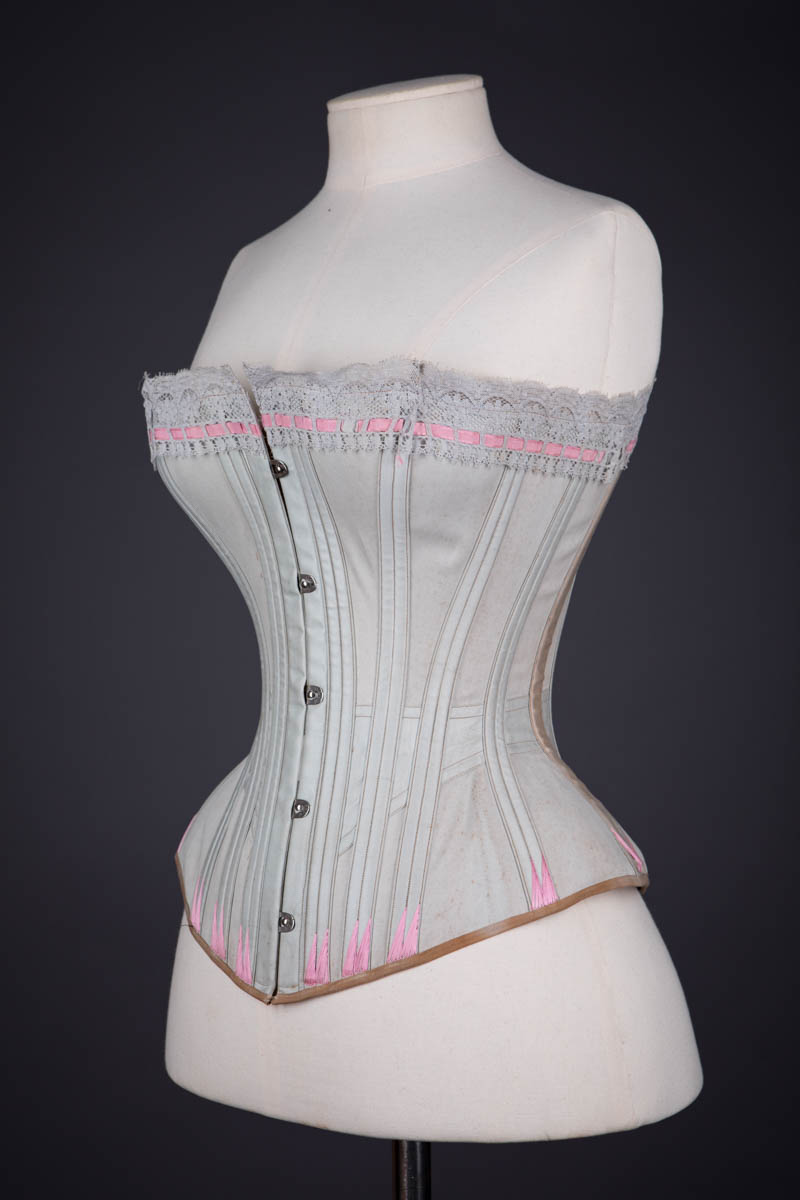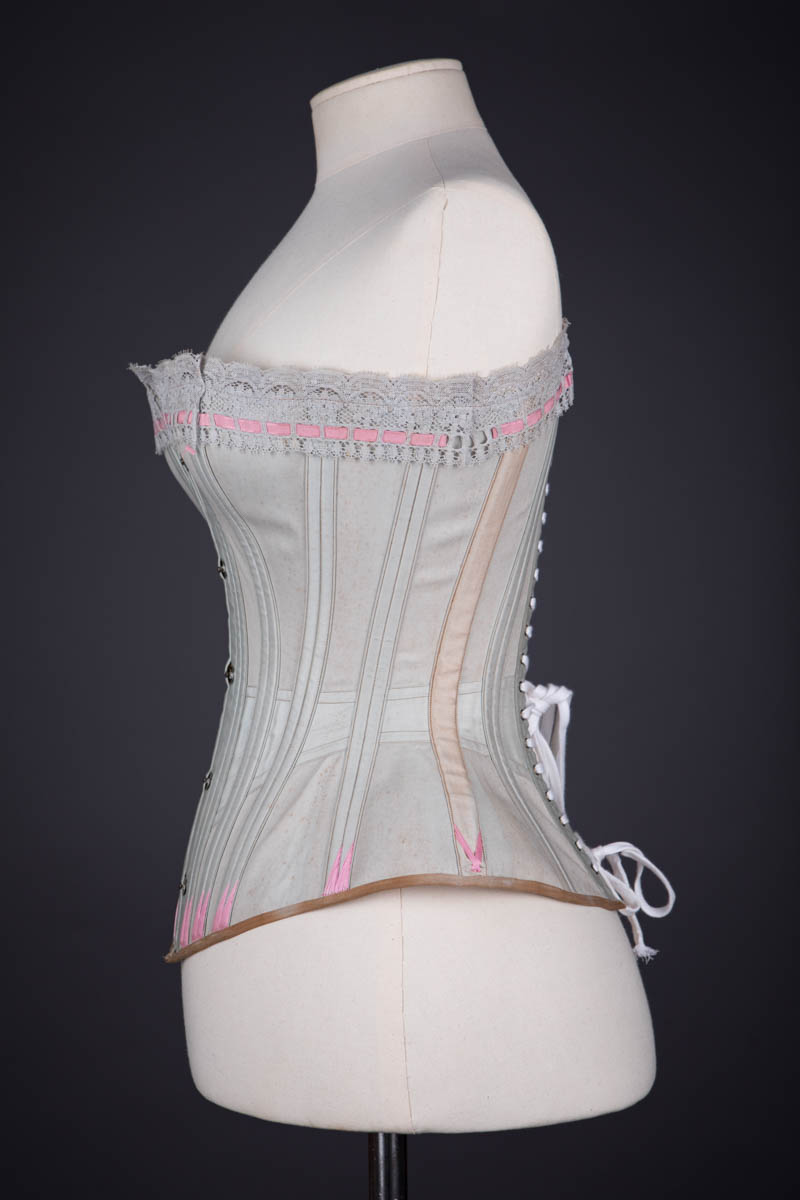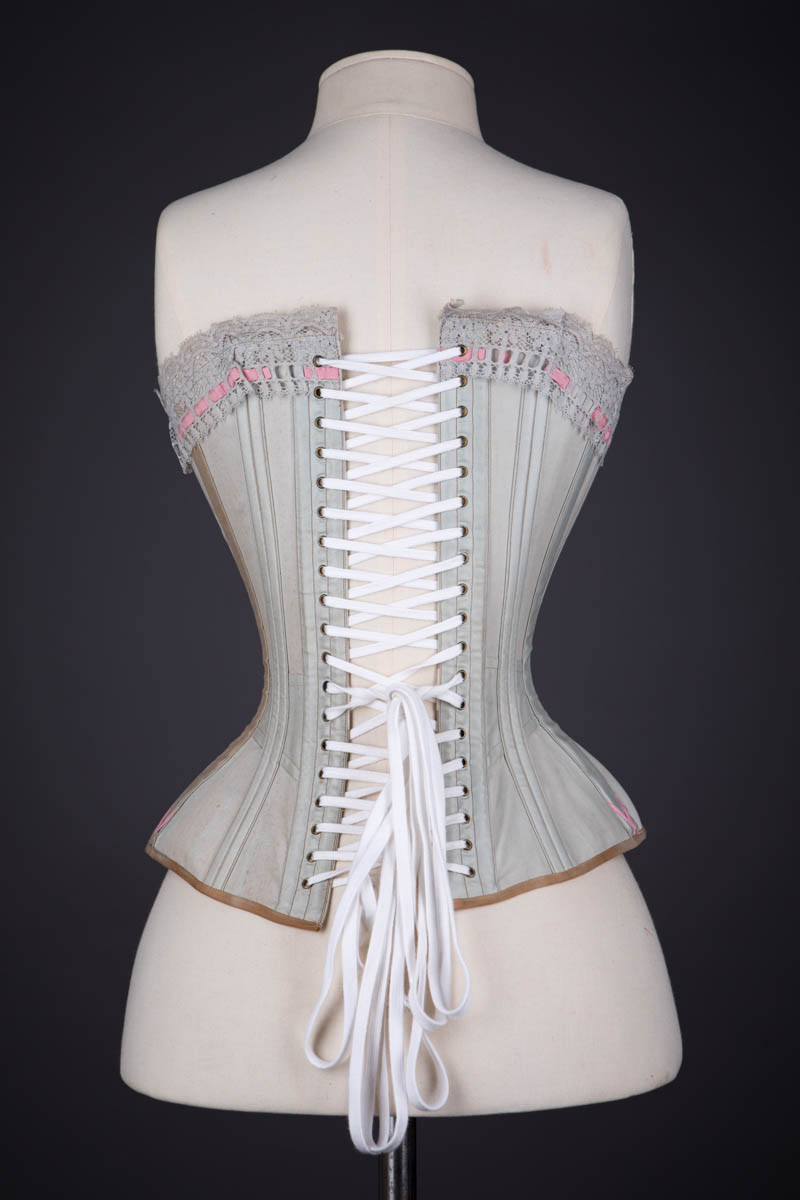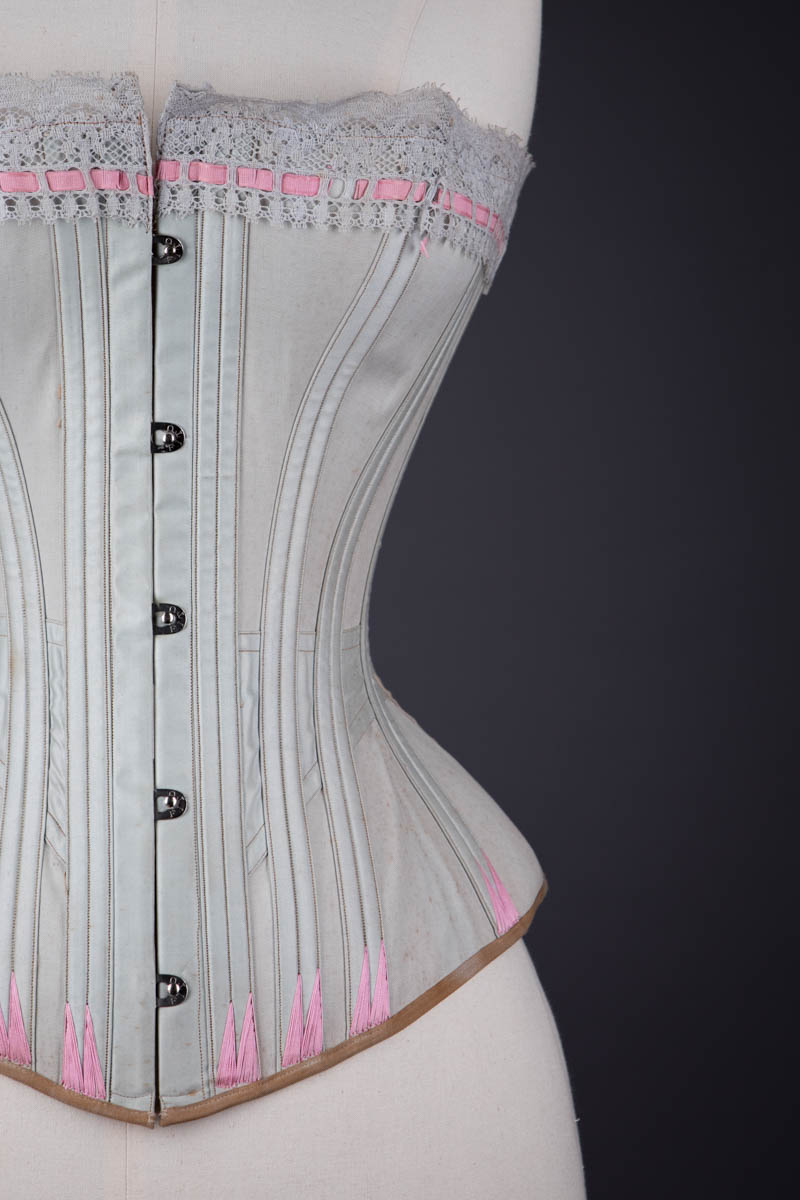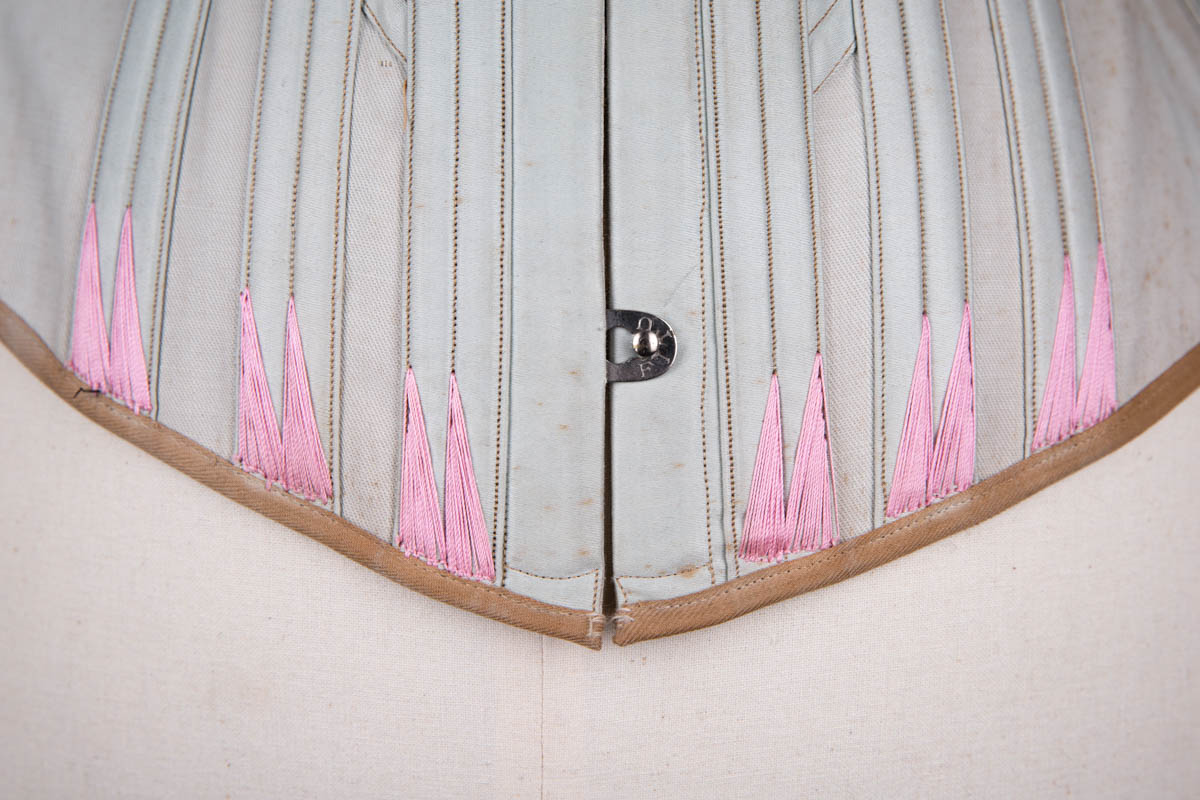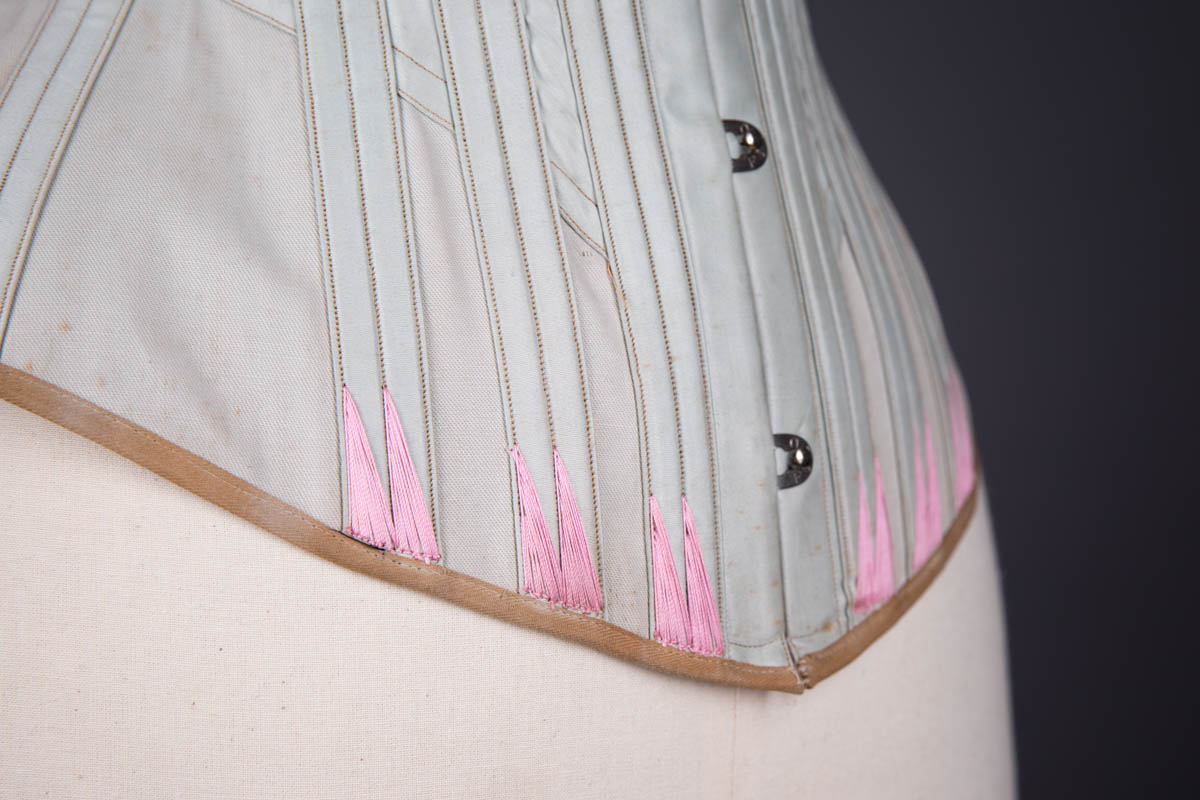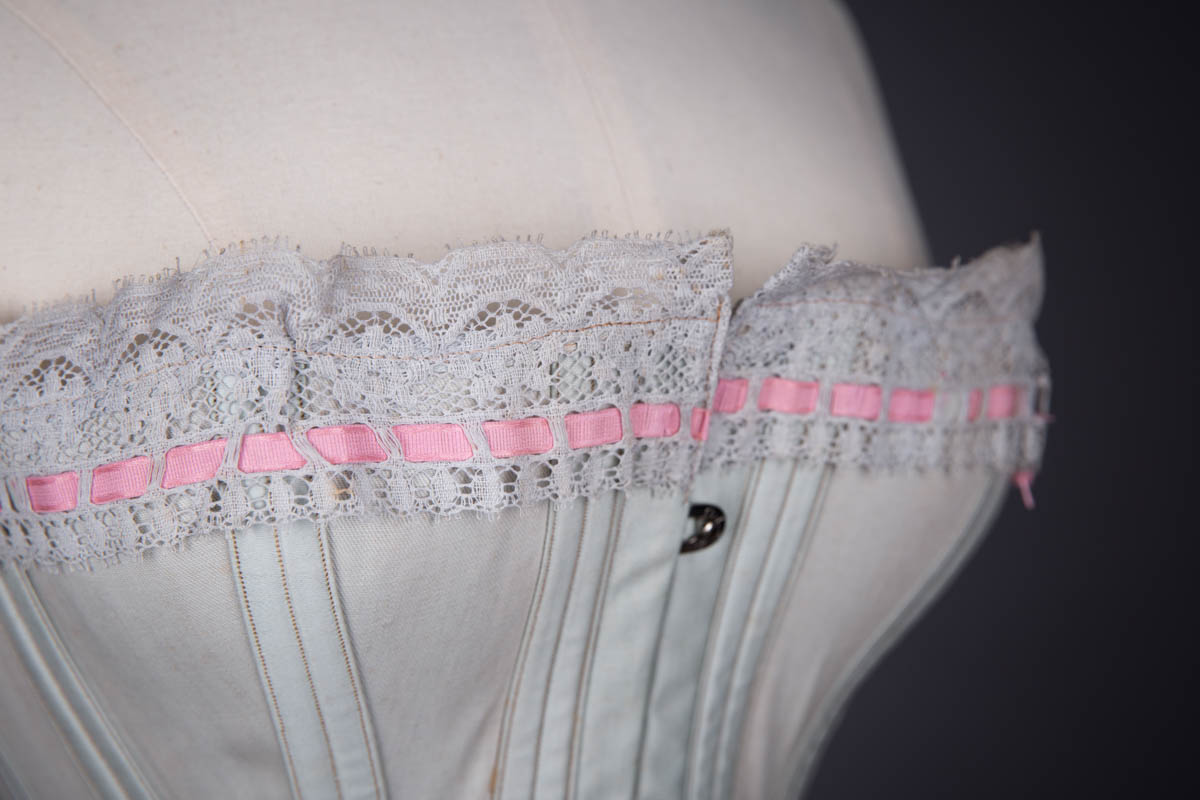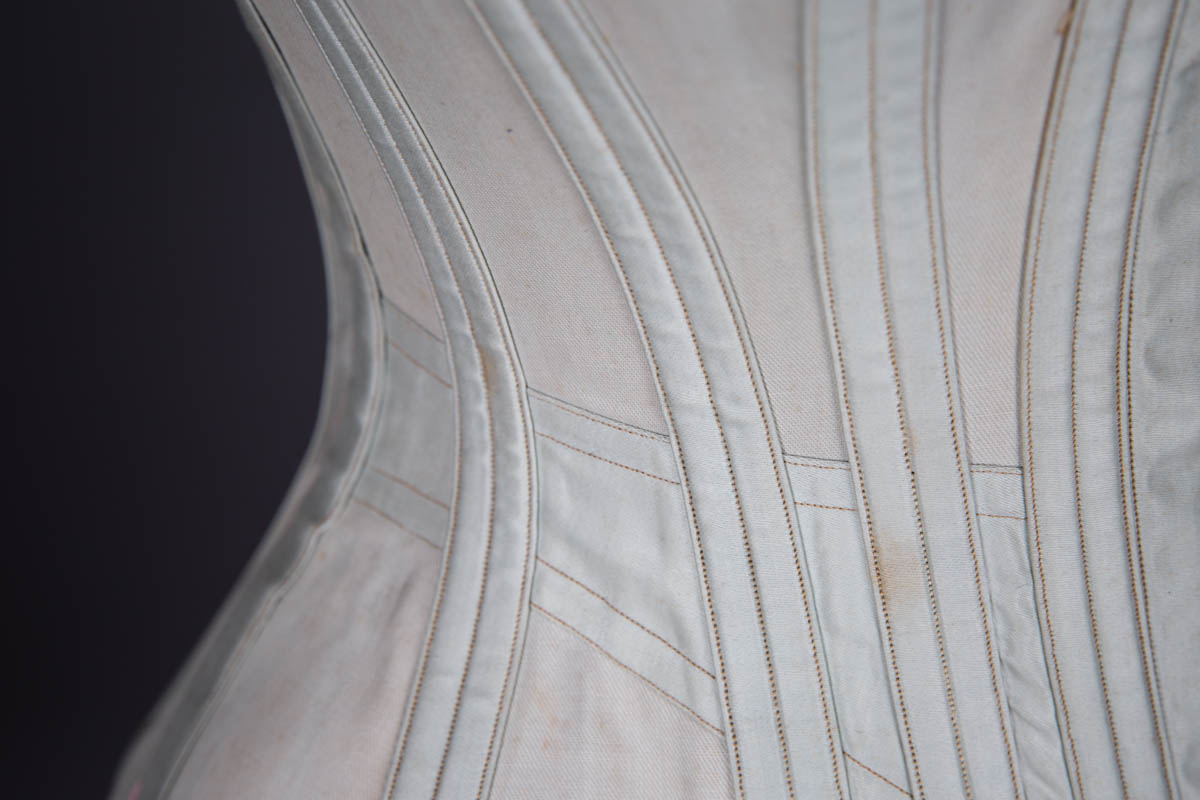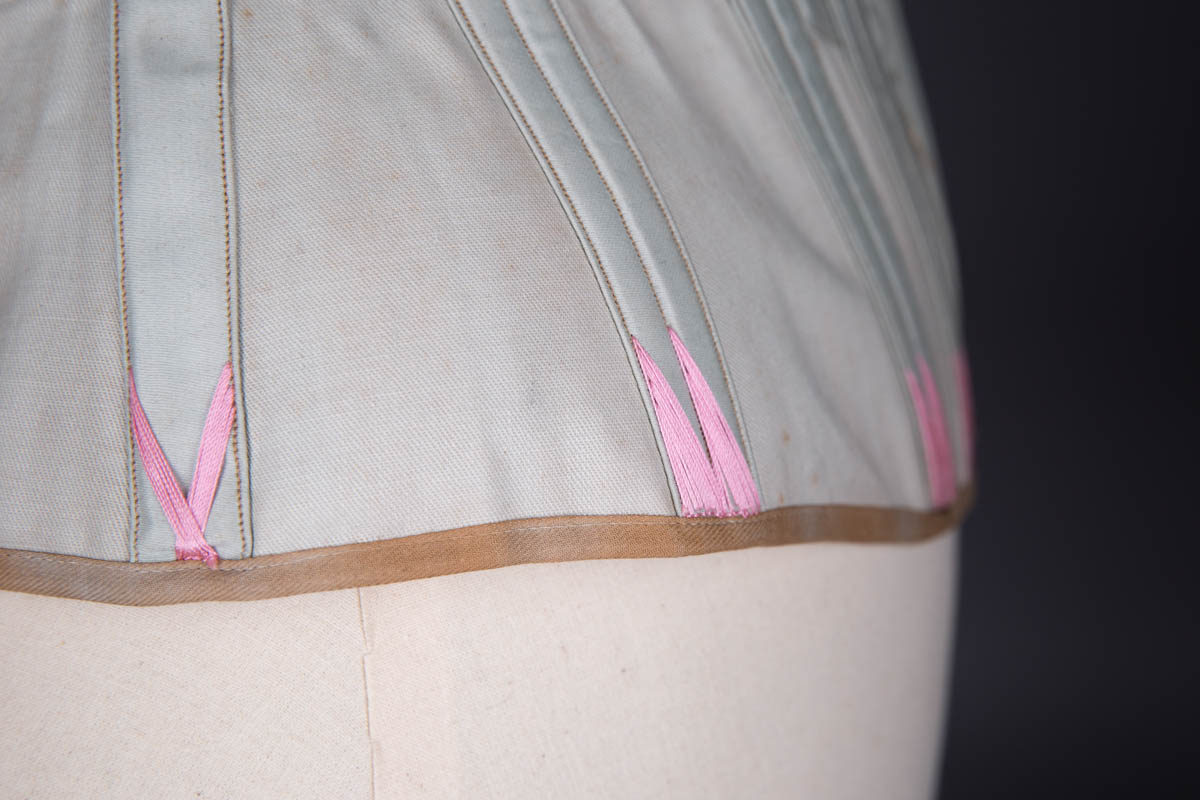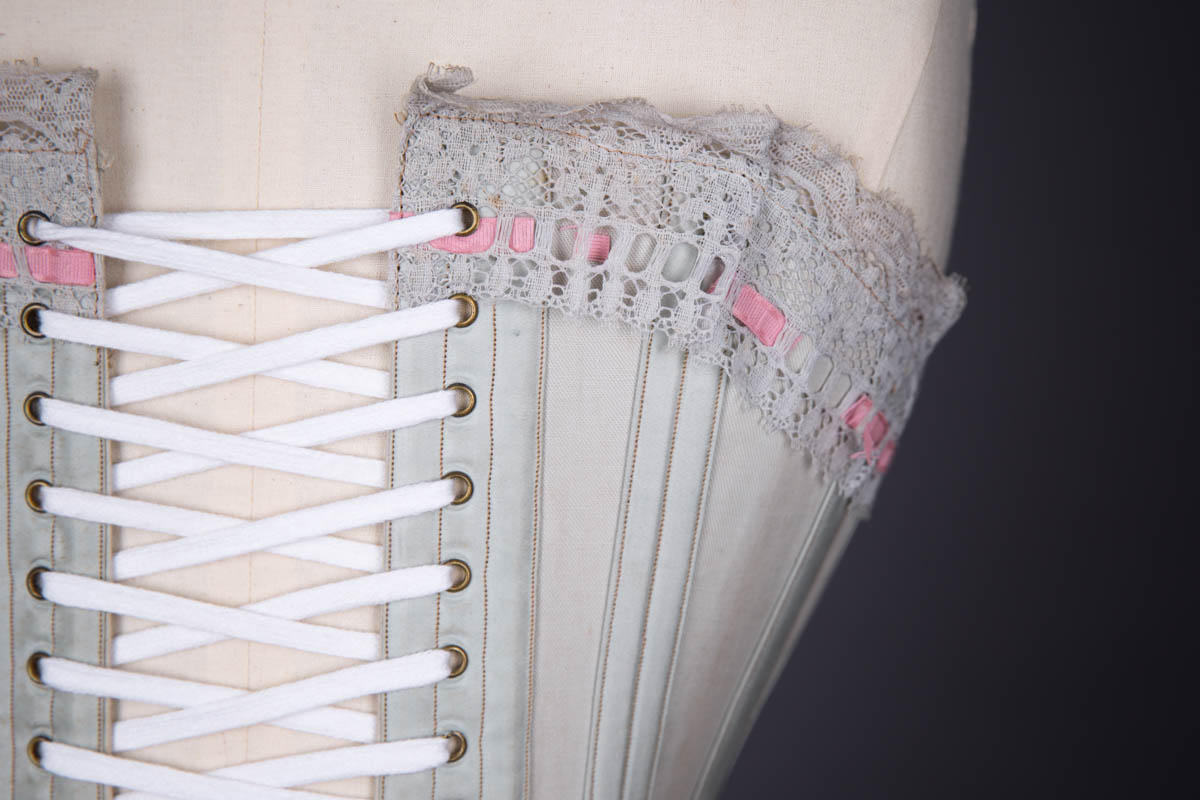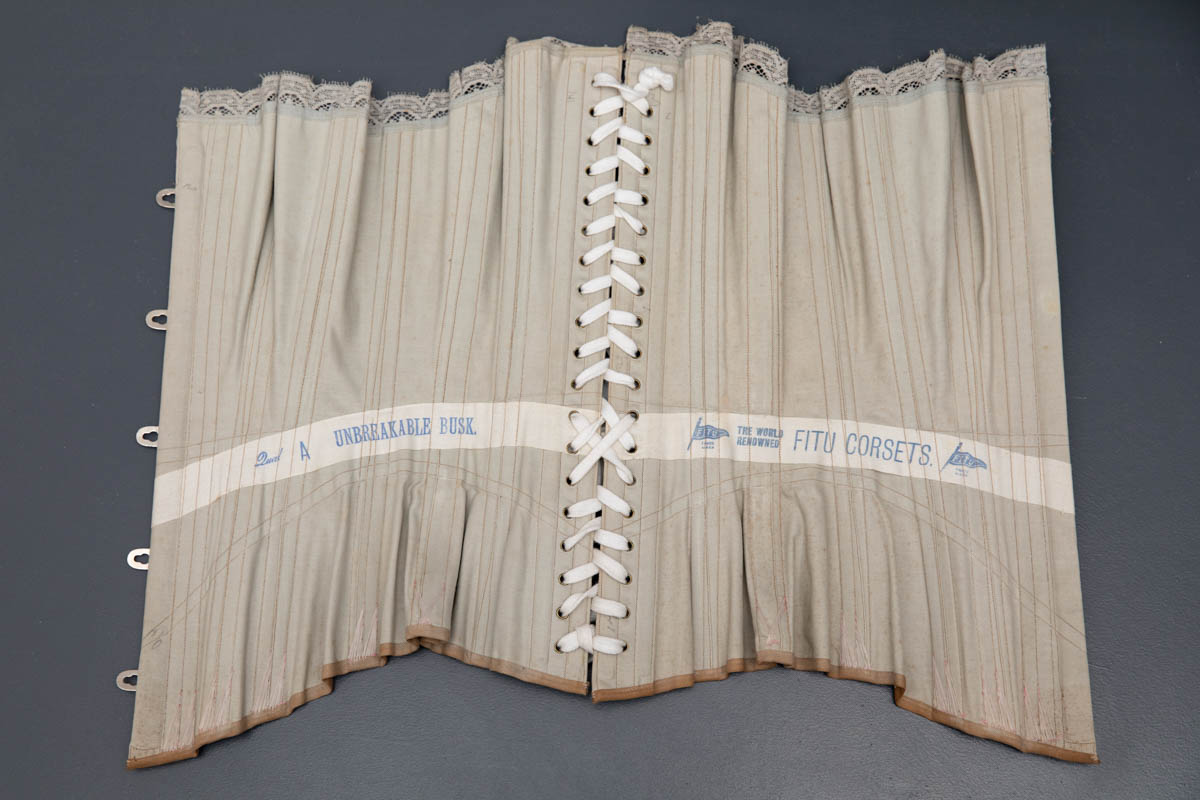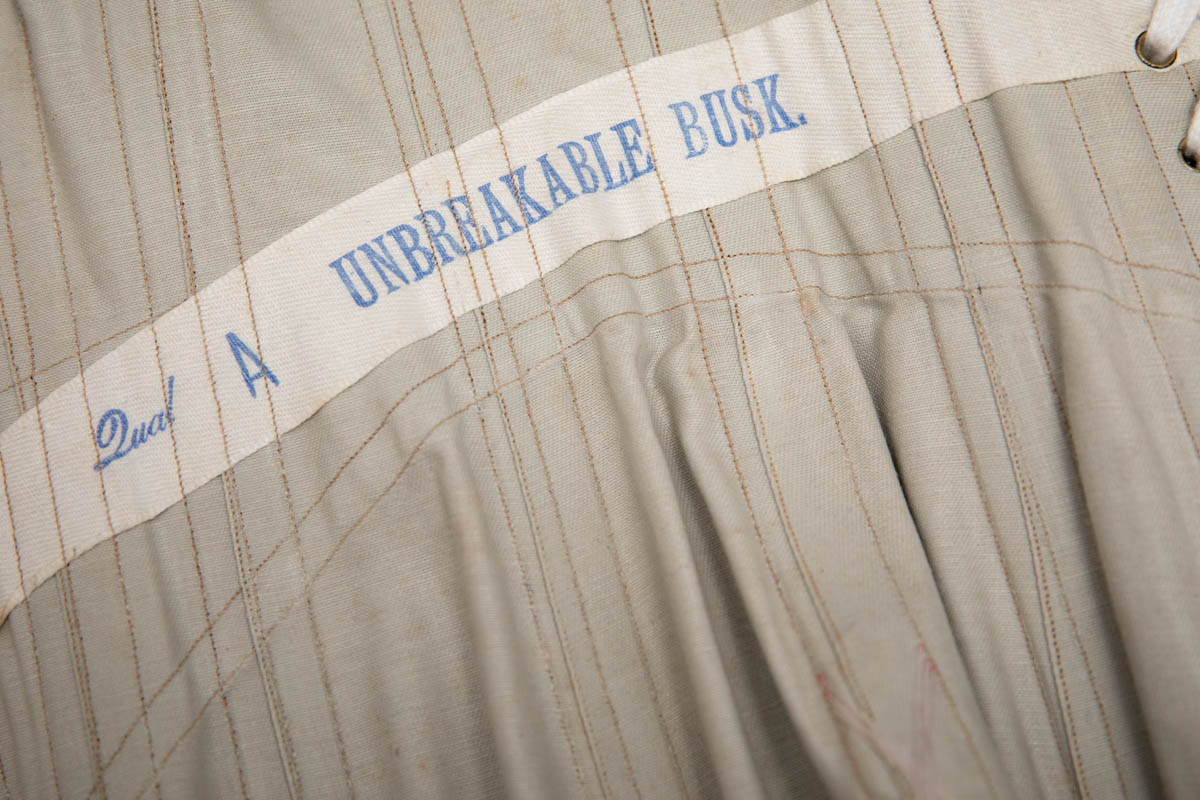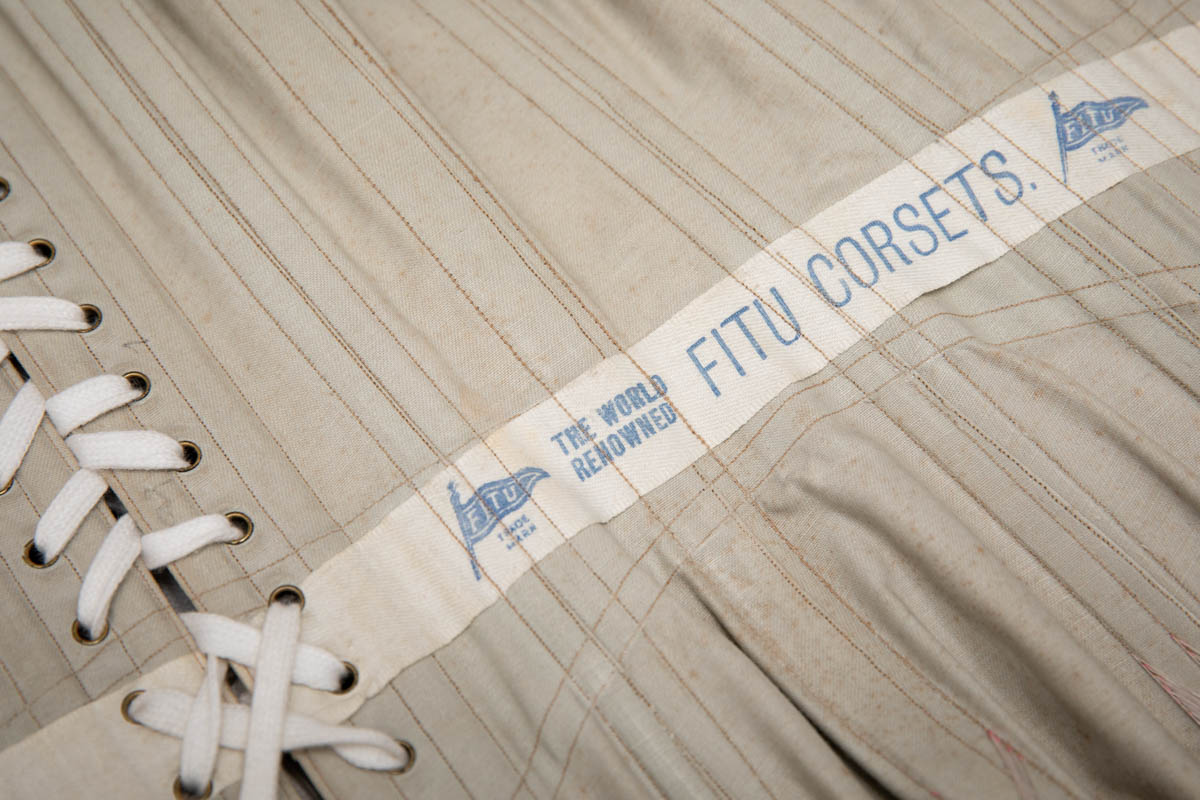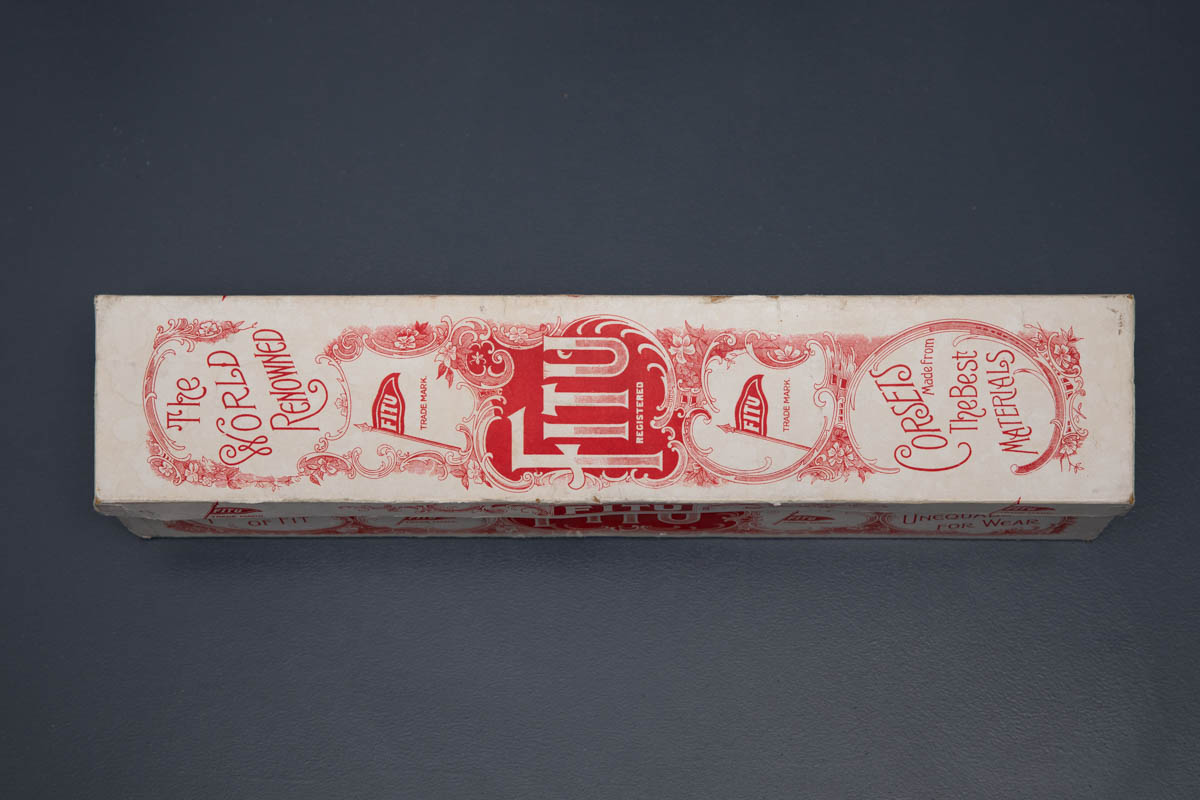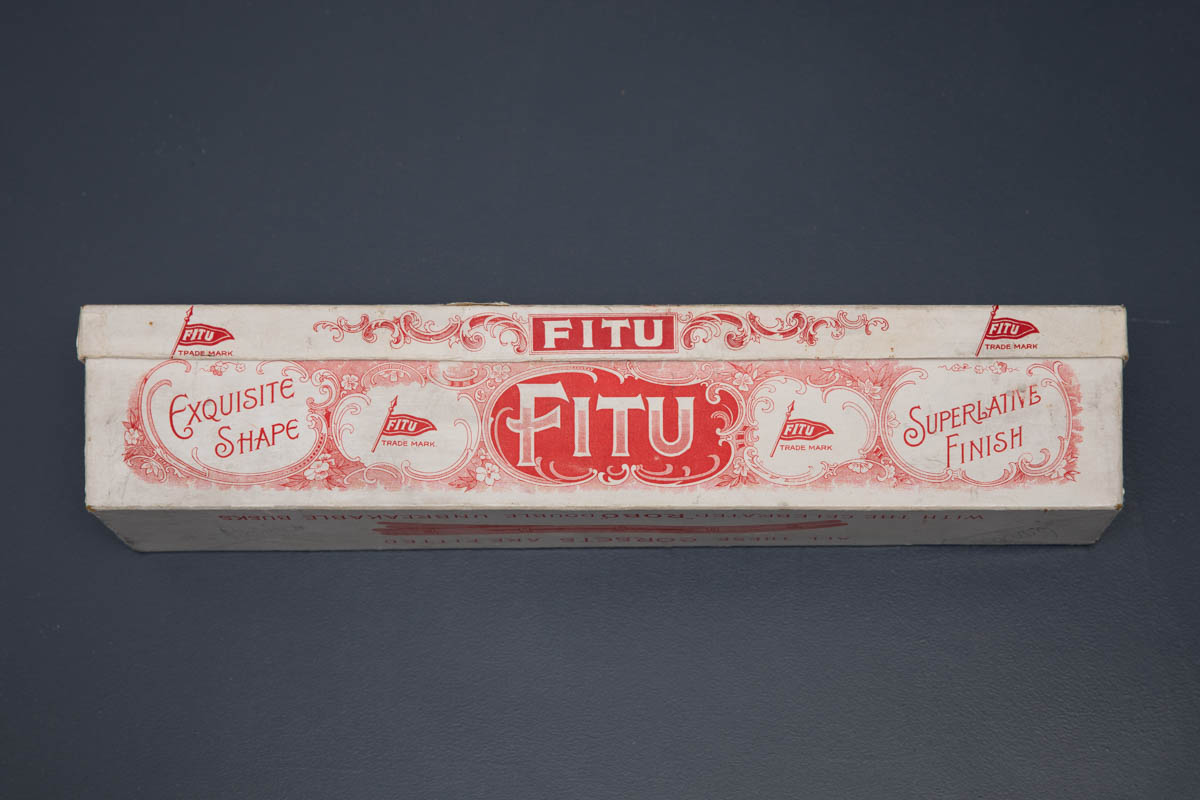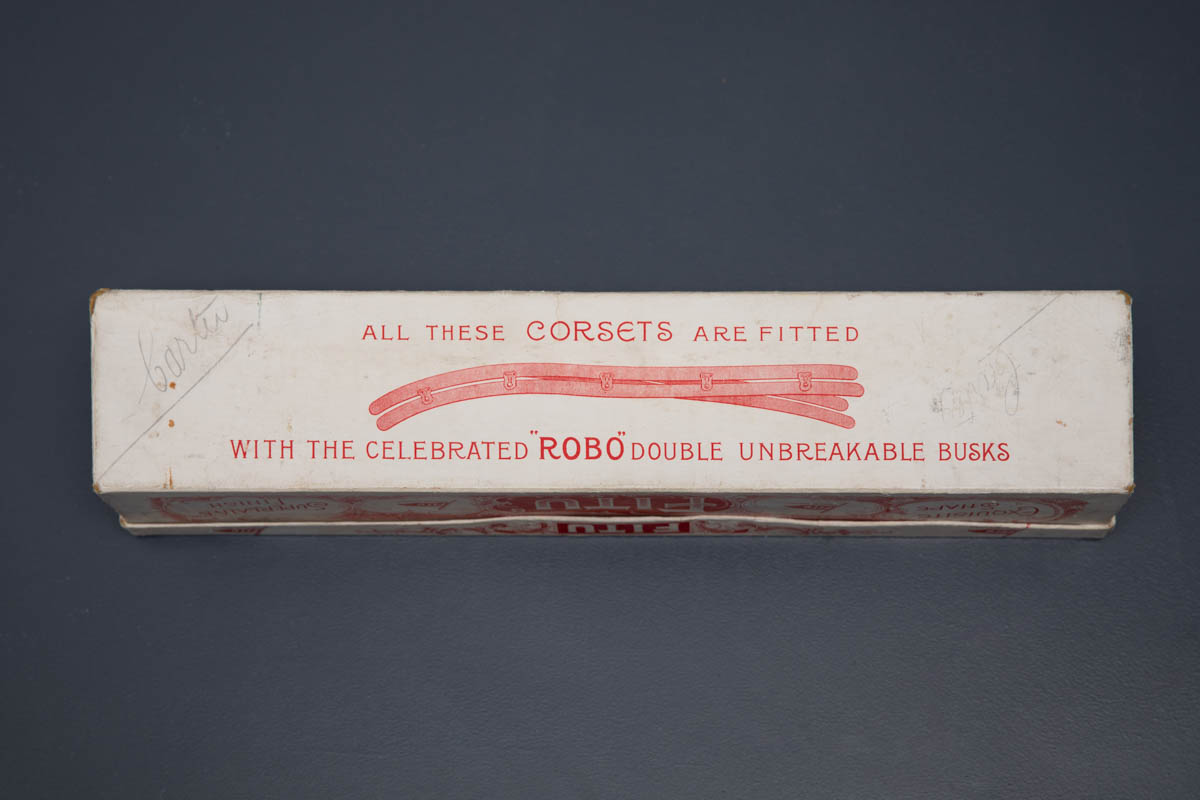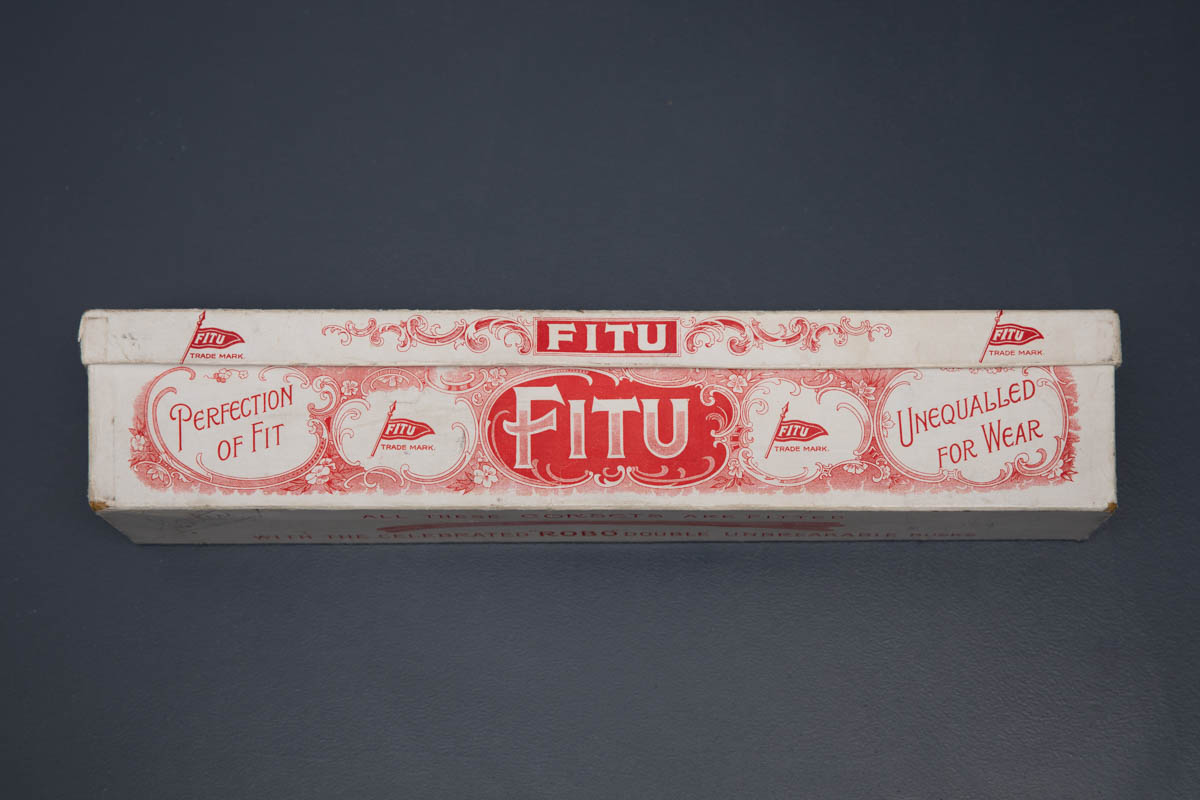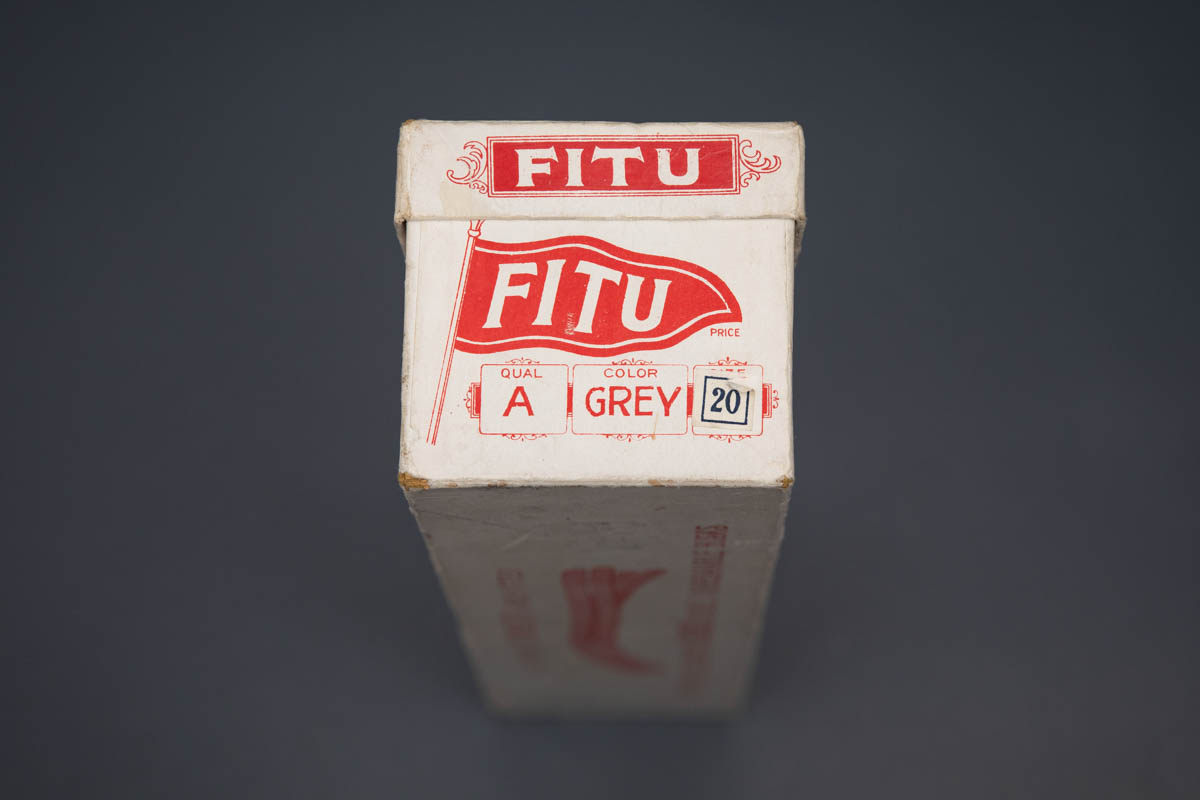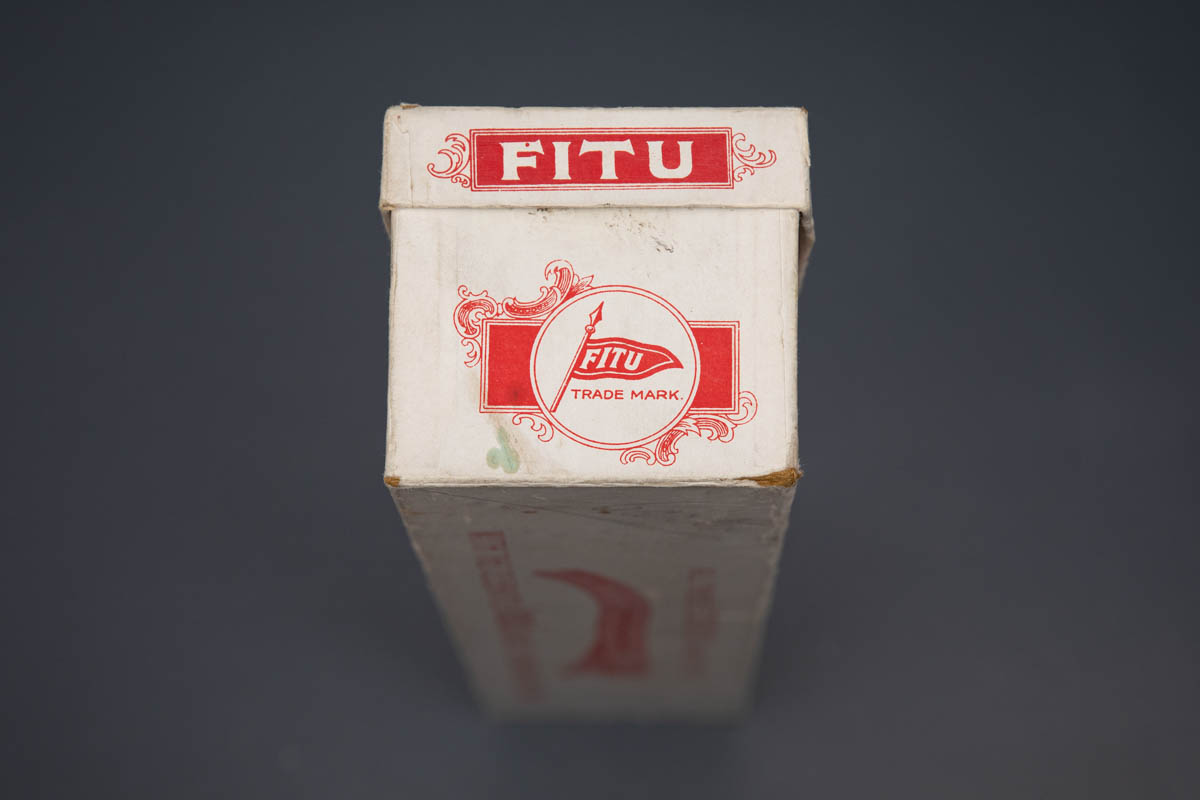Date: c. 1900s
Origin: Great Britain
Fabric: Cotton sateen and cotton twill
Brand: Fitu Corsets
An unworn corset accompanied by its original box from the brand Fitu. It is made from a single layer of grey cotton twill, with an external waist belt, facings and bone channels of tightly woven cotton sateen. The top and bottom edges are both bound in a narrow cotton twill tape, with a grey shade at the neckline and brown at the hips. The corset is structured with a mix of flat and spiral steel boning throughout. It fastens with a steel busk at the centre front, with the brand name ‘Fitu’ stamped into each hook. The rear of the corset fastens with lacing through single part metal eyelets (shown here with a contemporary cotton lacing). One of the eyelets is significantly offset on one side of the garment, a fault which may explain why the corset remained unworn.
The corset is embellished with a ribbon slot machine made lace trim at the neckline, with a bright pink silk ribbon threaded through. There is pink flossing embroidery at the base of the bone channels, a decorative but functional element that helps to secure the bones within their channels, and reduces the risk that they will rip through these casings. This embroidery has been done by machine, as evidenced by the differing shade of thread on the interior of the garment.
The interior of the garment reveals a cotton twill waist tape. On one side of the garment, this tape is stamped with the text ‘Qual A Unbreakable Busk’, and on the other, ‘The World Renowned Fitu Corsets’ with a flag logo and trademark. Broken busks were a relatively commonplace problem in late 19th century and early 20th century corsets, and several corset manufacturers marketed their solutions to this issue. In this advertising material for Oktis’ busk protector, it is claimed that one customer ordinarily breaks their corset busks every three weeks. The base of this Fitu corset’s packaging states that ‘all these corsets are fitted with the celebrated ‘Robo’ double unbreakable busks’, with a diagram of the multilayered busk construction.
The corset’s storage box is highly decorative, with lavish illustrations of scrolling florals in an Art Nouveau style. The text on this box markets the corsets as ‘World Renowned’ and made from ‘the best materials’, with ‘exquisite finish’, ‘superlative shape’, ‘perfection of fit’, ‘unequalled for wear’. The garment is marked as quality ‘A’, in the colourway ‘grey’ and size ’20’ (most likely referring to the 20″ waist).
A 19th-century engraving lists Chappell, Allen & Co. as the manufacturers of Fitu corsets, giving the address of Fitu House as 8 Well Street, Cripplegate, London, with two factories in Bristol and one in Portsmouth. Chappell, Allen & Co. was established by stay makers John Chappell and Charles William Allen in Bristol in 1860. In Greater Bristol (1893), writer Lesser Columbus described Allen as the “hand behind the throne” in Bristol, whereas Chappell oversaw the London branch. Columbus also noted the beauty of the factory’s numerous female employees, some of whom are pictured in the book, alongside men and children workers. It is unknown when they began specifically manufacturing Fitu-brand corsets. In 1896, Chappell dissolved their partnership, though Allen continued operating under both of their names.
As of 1918, Chappell, Allen & Co. exclusively sold its wares wholesale, supplying retailers in the United Kingdom, continental Europe, Australia, New Zealand, Canada, India, and South America. According to The Daily Telegraph, the company employed 2,000 workers in 1922. Keeping up with mainstream fashions for foundation garments, by the early 1920s, Fitu added brassieres to their range. During the 1930s they produced foundations designed for sportswear, step-ins with elastic panels, and brassieres with circular stitching in the cups. Material evidence suggests the company continued manufacturing throughout the 1940s, during the CC41 utility scheme, and possibly into the 1950s. Although it’s unknown when Chappell, Allen & Co. terminated the Fitu brand, the company continued to manufacture other lingerie brands in Bristol into the 1970s.
Many thanks to Summer Lee for the research and description of the Fitu brand.
From the collection of Karolina Laskowska
